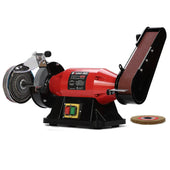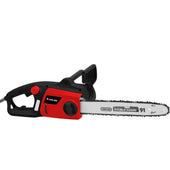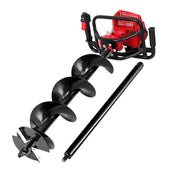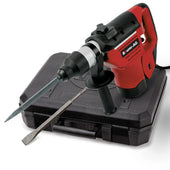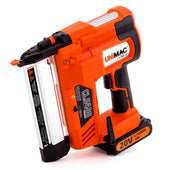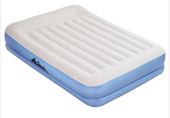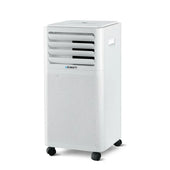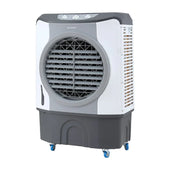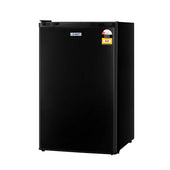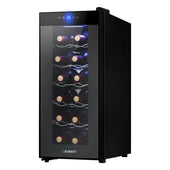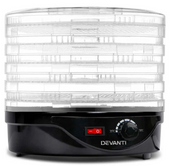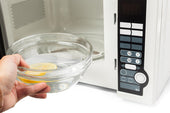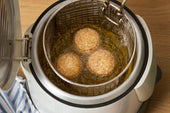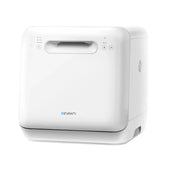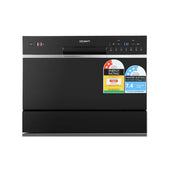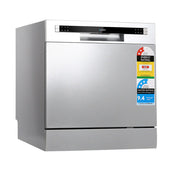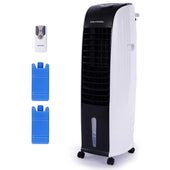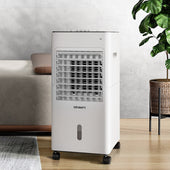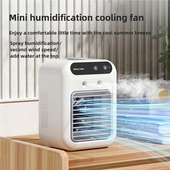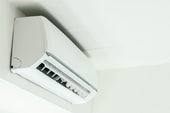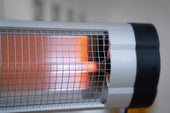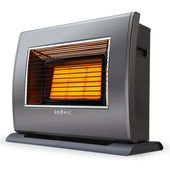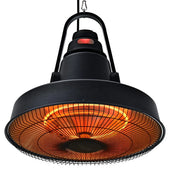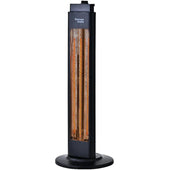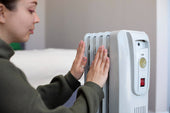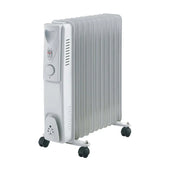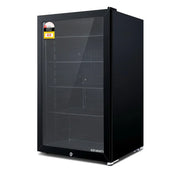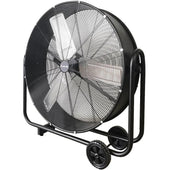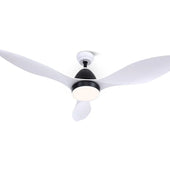Introduction: The Importance of Food Preservation
Food preservation has played a crucial role in human history, evolving alongside civilisations to ensure survival, reduce waste, and maintain food quality. By extending the shelf life of perishable items, preservation methods help retain their nutritional value and prevent spoilage caused by microorganisms, oxidation, and other natural processes. Effective preservation ensures food can be safely stored for long durations, allowing individuals to enjoy seasonal produce year-round.
Techniques like drying and salting were among the earliest methods used, but modern advancements have introduced sophisticated solutions. Among these, freezing has become one of the most efficient and widely used food preservation techniques, retaining taste, texture, and nutrients.
The Evolution of Freezing Technology
Freezing technology has undergone significant advancements since its inception. Early methods relied on natural ice storage, which later evolved into rudimentary mechanical refrigeration systems powered by vapour compression. By the mid-20th century, innovations like frost-free features and adjustable temperature controls revolutionised household freezers. During Days showcases how modern developments incorporate smart technology, enabling remote monitoring and precise climate control. Energy efficiency has also improved, with newer models using eco-friendly refrigerants. Alongside these mechanisms, advanced insulation materials have enhanced cooling retention. Transitioning from bulky standalone units to sleek, integrated designs reflects a shift towards convenience and aesthetics. Advances continue to drive functionality and sustainability.
How Freezing Prevents Spoilage and Bacterial Growth
Freezing halts bacterial activity by lowering the temperature to levels where microorganisms can no longer thrive. Most bacteria become dormant below -18°C, preventing food spoilage and extending shelf life. By slowing enzymatic reactions, freezing preserves the texture, flavour, and nutritional content of food. The formation of ice crystals also restricts water availability, a vital element for bacterial survival and growth.
Cold temperatures significantly reduce the metabolic rates of microbes, inhibiting their ability to reproduce. As a result, foods stored properly in freezers remain safe for consumption for extended periods. Maintaining consistent low temperatures is essential to uphold these protective mechanisms.
The Science Behind Freezing Temperatures
Freezing food revolutionises preservation by halting microbial activity and chemical reactions. At temperatures below 0°C, water in food transitions into ice crystals. This phase change reduces available moisture that microbes need to grow. The colder the temperature, the slower the enzymatic processes, preserving flavour, texture, and nutrients.
Modern freezers use precise temperature control, often set to -18°C, to maintain an optimal freezing environment. Rapid freezing minimises ice crystal size, preventing cellular damage in foods. This technique is crucial for retaining quality in delicate items like fruits and seafood.
Efficient insulation and refrigerants ensure consistent low temperatures, enhancing preservation efficiency.
Types of Modern Freezers and Their Features
Modern freezers are categorised based on design, features, and functionality.
Chest Freezers
- Provide ample storage capacity suitable for bulk storage.
- Feature manual defrost systems which can maintain energy efficiency.
- Often include dividers or baskets for organisation.
Upright Freezers
- Designed with vertical shelving for easy item access.
- Typically equipped with frost-free systems to minimise ice build-up.
- Automatic door seals enhance energy savings.
Portable Freezers
- Compact and lightweight for convenient transport.
- Work on versatile power options, including battery or mains.
- Offer adjustable settings for a range of freezing needs.
Integrated Freezers
- Blend seamlessly within cabinetry for aesthetic appeal.
- Ideal for space-saving kitchen installations.
- Advanced temperature controls ensure precise preservation.
These features serve diverse consumer requirements efficiently.
Energy Efficiency in Modern Freezers
Modern freezers are designed with advanced technologies to maximise energy efficiency while maintaining optimum performance. These freezers utilise improved insulation materials, minimising the loss of cold air and reducing energy consumption. Additionally, they are equipped with energy-efficient compressors that regulate temperature effectively without the need for excessive power usage.
Features such as adjustable thermostats allow users to optimise energy output based on their storage requirements. Smart freezers now incorporate sensors to monitor usage patterns, automatically adjusting energy consumption. Moreover, many models comply with strict energy standards, earning certifications such as the Energy Star label. These innovations help reduce both operational costs and environmental impact.
The Role of Freezer Compartments and Organisers
Modern freezers are designed with compartmentalisation and organisers to enhance storage efficiency and food preservation. Multiple compartments allow users to store foods at varying temperatures and humidity levels optimal for specific items. Adjustable drawers and dividers promote categorisation, enabling separation of meats, vegetables, fruits, and other items, reducing cross-contamination risks.
Transparent organisers improve accessibility, letting users locate items quickly without prolonged door openings that can compromise food integrity. Freezer shelves are often customisable, catering to larger containers or unique storage needs. By streamlining the organisation process, these features prevent food wastage and maintain ideal freezing conditions for diverse products.
Tips for Storing Food for Maximum Freshness
Proper storage is crucial to maintaining food quality and safety. Follow these tips to ensure food stays fresh for longer:
- Cool Food Quickly: Allow hot food to cool before placing it in the freezer. This prevents unnecessary strain on the appliance and avoids uneven freezing.
- Use Airtight Packaging: Wrap food tightly in freezer-safe wraps or use containers to avoid exposure to air and prevent freezer burn.
- Label and Date Items: Clearly label stored food with its name and date of freezing to ensure proper rotation and identification.
- Don’t Overload the Freezer: Maintain space for proper air circulation, ensuring even cooling throughout.
- Freeze in Portions: Divide food into usable portions to avoid thawing and refreezing large quantities.
Freezer-Safe Packaging and Labelling Best Practices
Proper packaging and labelling are essential for maintaining food quality in modern freezers. Selecting freezer-safe materials is crucial. Airtight containers, heavy-duty freezer bags, and aluminium foil help prevent freezer burn by blocking air and moisture. Wrapping food tightly ensures protection from ice crystal formation.
Labelling is equally important for organisation and safety. Use durable, waterproof labels with clear dates and descriptions. Including "use by" dates helps ensure food is consumed within safe and optimal timeframes. Arrange items so older food is more accessible, following the "first in, first out" method. Consistently applying these practices preserves texture, taste, and nutritional value efficiently.
How to Maintain and Clean Your Freezer for Longevity
Proper maintenance of a freezer plays a crucial role in ensuring its durability and functionality. Regular cleaning reduces the build-up of frost and unwanted odours. To keep the appliance efficient, ensure the door seals are in top condition by inspecting them periodically and wiping away debris.
Cleaning Steps:
- Defrost regularly: Unplug the freezer and remove all food items and frost using a soft scraper.
- Use mild cleansers: Clean the interior with warm water and a gentle detergent. Avoid abrasive materials to prevent damage.
- Clean coils: Dust the condenser coils at least twice annually to enhance cooling efficiency.
- Dry before plugging in: Ensure all components are completely dry before turning the freezer back on.
Attention to these tasks will prolong the life and performance of the appliance.
Understanding Freezer Burn and How to Prevent It
Freezer burn occurs when food loses moisture due to prolonged exposure to cold, dry freezer air. This process causes dehydration and oxidation, leading to discolouration, a rough texture, and off-flavours. It typically affects meat, vegetables, and baked goods, making them less appetising but still safe to eat.
Causes of Freezer Burn:
- Improper Packaging: Insufficient sealing allows air to contact food surfaces.
- Lengthy Storage: Extended freezing increases moisture loss.
- Fluctuating Temperatures: Temperature changes cause condensation and refreezing.
Prevention Tips:
- Use airtight containers or vacuum-sealed bags.
- Wrap items tightly with plastic wrap or aluminium foil.
- Keep the freezer temperature below -18°C.
- Label and rotate food regularly to minimise prolonged storage times.
Proper storage techniques can help maintain food quality and extend freezer life.
Innovative Freezing Technologies: Smart Freezers
Smart freezers incorporate advanced technologies to revolutionise food preservation. These appliances utilise IoT (Internet of Things) to connect with mobile devices, allowing remote monitoring and control. Features such as temperature sensors maintain consistent freezing conditions, optimising food storage.
Some models include intelligent inventory systems that keep track of stored items and expiration dates, reducing waste. Energy-efficient designs and AI-driven cooling systems ensure minimal electricity usage while preserving food quality.
Voice command integration with virtual assistants provides hands-free operation. With diagnostic tools, these freezers can self-detect issues, notifying users for timely maintenance. Smart freezers redefine convenience and efficiency in modern households.
Sustainability Practices in Modern Freezers
Modern freezers are designed with a focus on energy efficiency and eco-friendly features, reducing their environmental footprint. These appliances are equipped with advanced insulation materials that minimise energy loss and maintain consistent internal temperatures. Many models also use natural refrigerants, such as R-600a, which have low global warming potential compared to traditional refrigerants.
Manufacturers emphasise designing freezers with durable components to extend product life and decrease waste. Energy-saving modes and smart sensors help regulate power usage, adapting the freezer’s operation to the user's habits. Additionally, recyclable materials are increasingly used in the production process, promoting a circular economy approach.
Troubleshooting Common Freezer Issues
When dealing with freezer malfunctions, identifying common issues is crucial. Here are typical challenges and their potential solutions:
- Freezer Not Cooling Properly: Check the thermostat setting and ensure it is cold enough. Inspect the condenser coils for dirt or dust buildup, which may obstruct performance.
- Excessive Frost Buildup: This may occur due to a worn-out door seal allowing air leakage. Replace it if damaged.
- Unusual Noises: Strange sounds may result from a faulty fan motor or loose components in the compressor. Tightening or replacing parts might be necessary.
- Leaking Water: Blocked or frozen drain lines commonly cause leaks. Thoroughly clean and unclog the drain.
- Persistent Odours: Remove spoiled food and deodorise by cleaning shelves with a mild vinegar solution.
Regular maintenance prevents recurring problems.
Conclusion: How Freezers Enhance Modern Life
Modern freezers play an indispensable role in daily life, transforming the way individuals store, preserve, and access food. By freezing perishable items, freezers effectively extend shelf life, reducing food waste and offering economic benefits to households. They empower people to purchase and store food in bulk, decreasing the frequency of shopping trips and improving convenience. Additionally, they support dietary variety, enabling seasonal foods to be enjoyed year-round. Freezers also contribute to food safety by halting bacterial growth, ensuring meals remain safe to consume for extended periods. Their contribution to modern lifestyles has fundamentally reshaped how food is managed and consumed globally.


